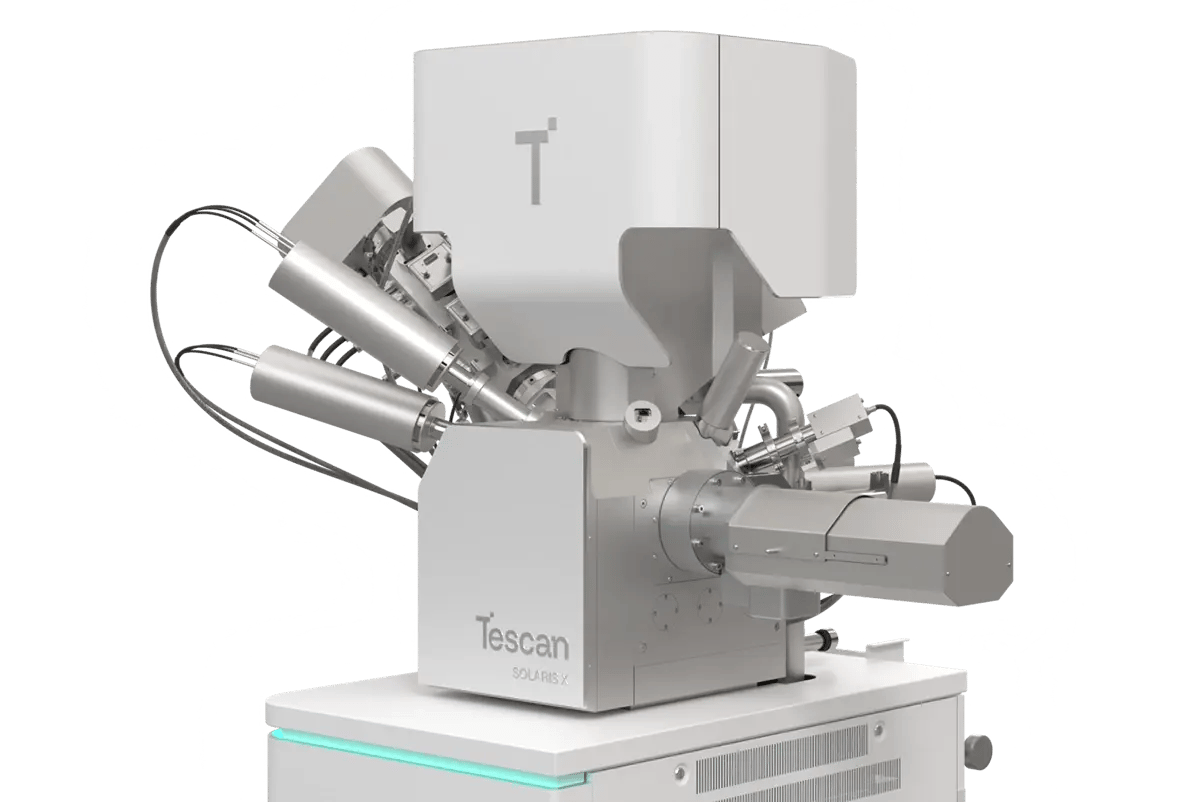1. Root of the Problem
Why Mechanical Polishing Fails in Physical Failure Analysis of MEMS
Accurate inspection of MEMS motion sensors requires clear access to wafer-to-wafer bonding layers. Yet traditional mechanical polishing introduces stress and damage that compromise analysis. Delamination, tearing, or complete loss of the metallic interface are common, preventing reliable evaluation of adhesion quality or defect sites.
These fragile, multilayer structures demand a non-mechanical preparation method that maintains integrity while exposing internal layers at scale. Without it, critical information about sensor packaging and bonding performance remains hidden, delaying root cause identification.
Tescan SOLARIS X with Xe plasma FIB-SEM solves these issues by delivering large, artifact-free cross-sections and high-contrast SEM imaging of delicate bonding layers.
2. Materials and Methods
How Plasma FIB-SEM Enabled Physical Failure Analysis of MEMS Motion Sensors
A MEMS motion sensor containing wafer-to-wafer metallic bonding was selected to demonstrate plasma FIB-SEM preparation and imaging. A 1 mm-wide, 507 µm-deep cross-section was milled using the Mistral™ Xe plasma column at high beam current, ensuring rapid material removal while preserving surface integrity.
Imaging was performed with the Triglav™ SEM column at 2 keV, using Mid-Angle BSE detection to enhance contrast within metallic bonding layers. The controlled plasma milling strategy prevented delamination or structural tearing, delivering smooth sidewalls across the entire cross-section.
This integrated workflow enabled direct visualization of internal bonding interfaces with high clarity, avoiding the artifacts and structural loss typical of mechanical polishing.
3. Results and Discussion
Accurate Cross-Sectioning Preserves MEMS Bonding Layers for Reliable Failure Analysis
Tescan SOLARIS X enabled preparation of a 1 mm-wide cross-section through a MEMS motion sensor, exposing the wafer-to-wafer bonding interface without delamination or tearing. The metallic bonding layer remained intact, maintaining adhesion structures that are often destroyed by mechanical polishing.
Low-kV SEM imaging with Mid-Angle BSE provided high-contrast visualization of bonding seams and metallic interfaces, revealing composition differences and adhesion quality with clarity. Clean sidewalls and smooth surface geometry ensured that structural details were preserved across the full depth of the cross-section.
The workflow delivered artifact-free results within routine analysis times, demonstrating suitability for high-throughput failure analysis of MEMS devices. Compared to mechanical methods, plasma FIB-SEM offered superior reliability, higher resolution, and reduced risk of sample loss.



.png?width=1200&height=1200&name=1_SEM%20image%20of%20the%20MEMS%20device%20(1).png)





